Dell Precision 3930 Performance
In terms of performance, our Precision 3930 was very close to our Xeon E-2146G in our original review. As such, we thought it was worthwhile showing the other CPUs we have tested just to give some sense of the range of what one can configure in this system. Of course, you can go to the original CPU reviews to see how these compare to other platforms. Instead, we wanted to show relative performance since there are a lot of configuration options. Here is our Linux kernel compile benchmark:
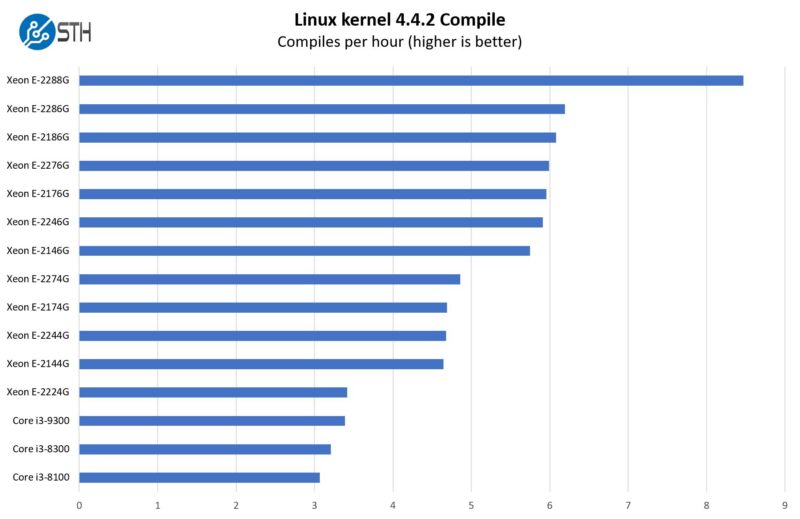
Here is the 7zip compression:
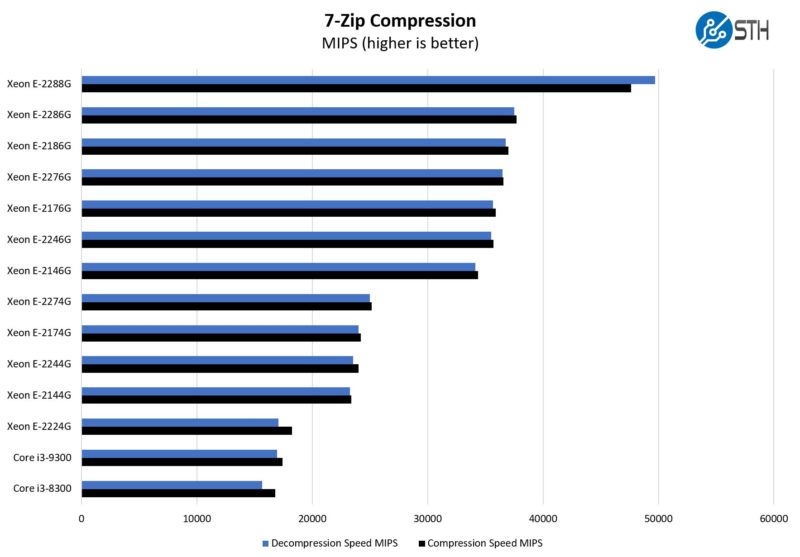
Here is our OpenSSL sign:
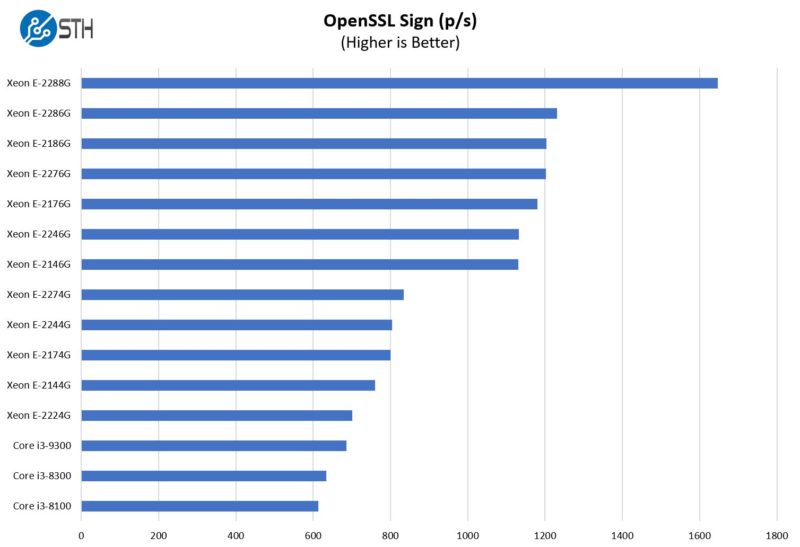
Here is the OpenSSL verify:
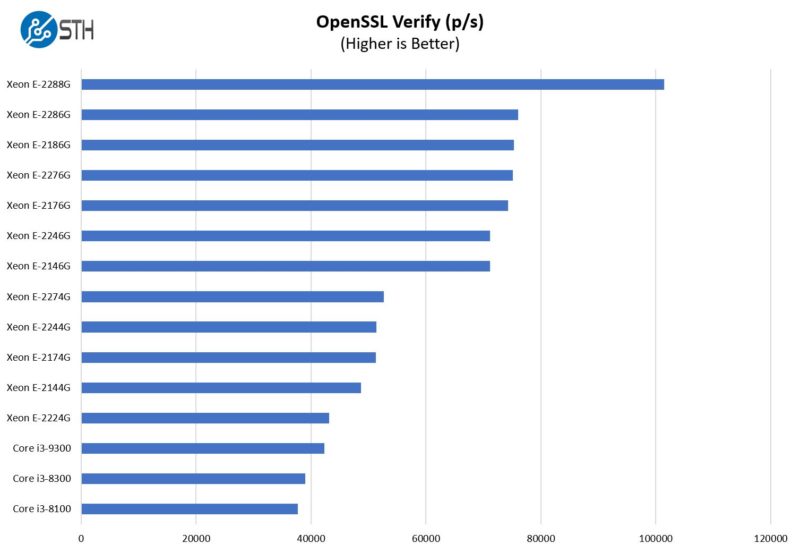
The key takeaway here is the same as when we did the initial reviews. The big performance deltas are really found when scaling cores/ threads in this line, not when going up a minor SKU bump. That is why the Xeon E-2146 we called our top value pick in the Xeon E-2100 generation. Of course, if you have a Quadro RTX 4000 or something configured and lots of memory and storage, moving up CPU levels is a relatively small cost and may be worthwhile. Moving up CPU tiers also means something else in this system, the Microsoft tax.
Microsoft Windows Pro for Workstations Tax
One item that we need to mention is the impact of this being a Windows Pro for Workstations line. Microsoft makes Xeon workstations, even at the low-end like this, sell with Windows Pro for Workstations or Windows for Workstations. The Intel Core equipped systems can use Windows 10 Pro (or 11 Pro). If one configures a Xeon, the price is fairly similar for the hardware, ECC support is added, but the Microsoft license needs to change.
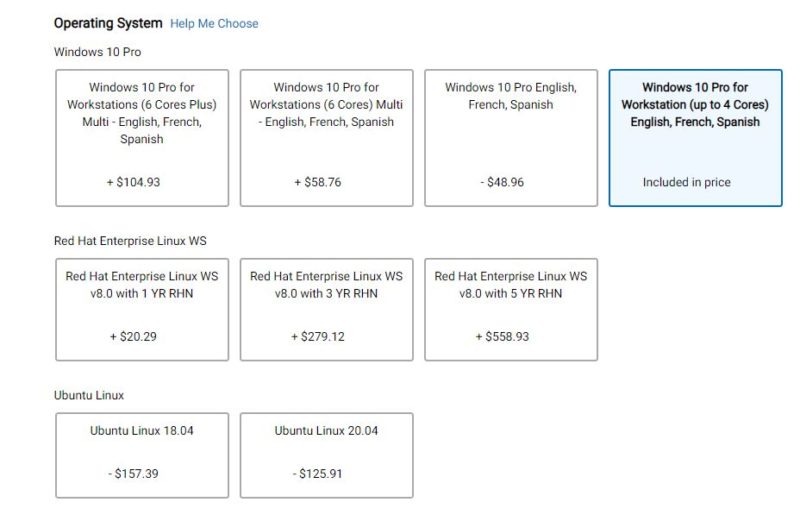
As one can see, for the four core models, there is a ~$48 increase, for six-core models, like what we have, it is over $100. For 8-core models, this is over $150 more. One gets features like SMB direct, but that needs a RDMA NIC and supporting infrastructure. One gets PMem support with the Windows version, but the Xeon E platform does not support NVDIMMs or Optane PMem. One can use ReFS, but that is still not the most used solution. Overall, there is not much one gets as a benefit, so this is basically just a tax that Microsoft and its OEM partners levy on Xeon systems. Again, this system with the Intel Core CPUs with the same features other than ECC UDIMM support does not need this special Windows version.
Next, let us get to power consumption then on to our final words.




The Windows for Workstations tax is unacceptable. The vast majority of users for these workstations will never use any of the features. For those that do, they have easy access to the upgrade. Requiring users to purchase it when the system isn’t even equipped with RDMA NICs and doesn’t support PMem is ridiculous. ReFS is still a (cool) technical preview, and rarely — if ever — used in production.
Windows for Workstations is a valuable SKU for those that need it, but on these systems it leeches value from the solution and angers customers.
Dell: “The world’s most powerful 1U rack workstation.”
Processors: One 9th hem Core i3, i5, i7 and i9 or E-2200 family with up to 8 Cores OR
8th gen Core i3, i5 and i7 and Intel Xeon Processor E-2100 family of CPUs with up to 6 cores
I wish for a intel 12th gen worstation :(
I’m curious about what the plan is for the ports on this one.
It’s the sort of selection that one would want on a workstation/desktop; but a 1U fan array is very much not what you’d want on your desk.
The Supermicro system you compared it to seemed to have that in mind: basically just basic server management and NICs with the intention of being remotely accessed.
You certainly could do that with this one; but there would be a lot of ports just sort of sitting there; and while there are KVMs that will do extension of more than just a VGA port and a couple of USB HID things; getting a couple of displayport outs, some 5 or 10Gb USB and the like extended would be exotic and expensive; and if you are just going to VDI in that’s a lot of bezel that would have been better off as vents or extra drive bays or something.
@fuzzy, I agree – although this is a cool system, I’m struggling to figure out who buys it. No way do I want a rack next to my desk, and most IT shops don’t just allow users to wander into the server room (or access a rack in a closet) and start plugging USB drives and SD cards into devices. Still scratching my head trying to picture who buys this and why. Whoever it is, that niche customer is probably part of the reason they’re relatively inexpensive used (“refurbished”) units… Can anyone think of a use case for this strange computer?
What a deal at “just over $1000.00”.
It would be a lot more appealing in 2U, my office isn’t that cramped that I want to surround myself with 40mm banshees, err, fans.
Is there a reason you wouldn’t just treat this as a remote workhorse and just RDP into it? The video card etc still does the lifting but you could put a raspberry pi on your desk if you wanted to and still effectively have the same workstation performance.